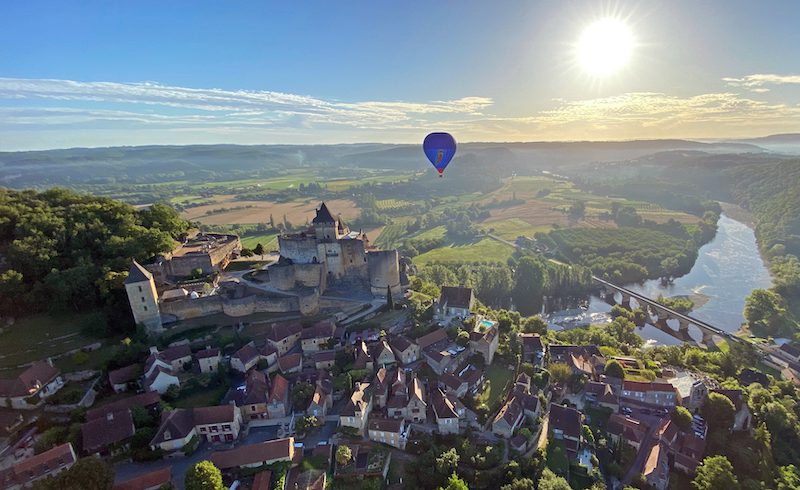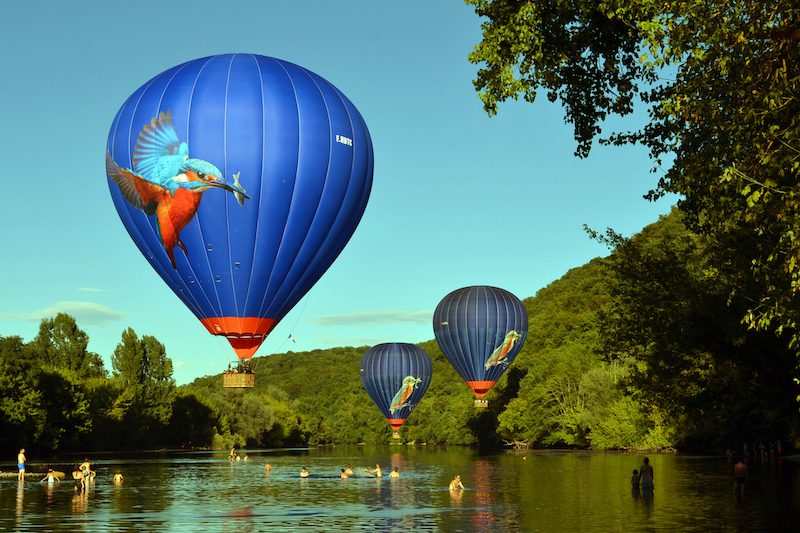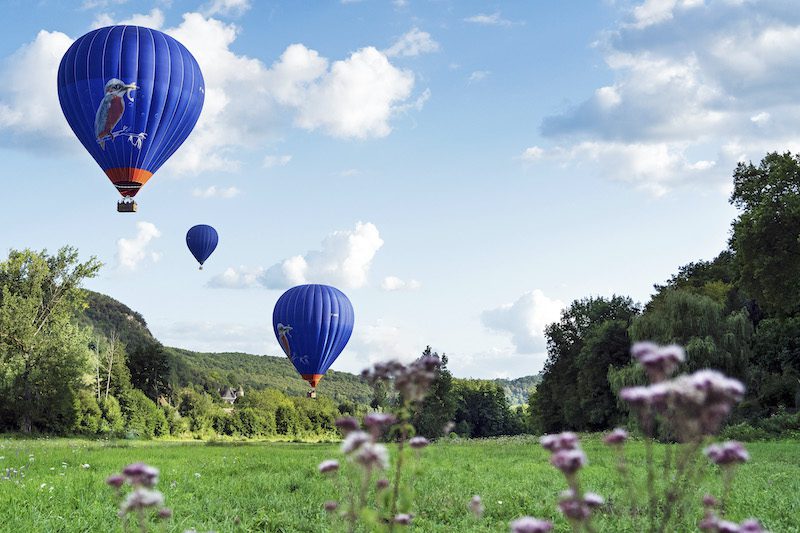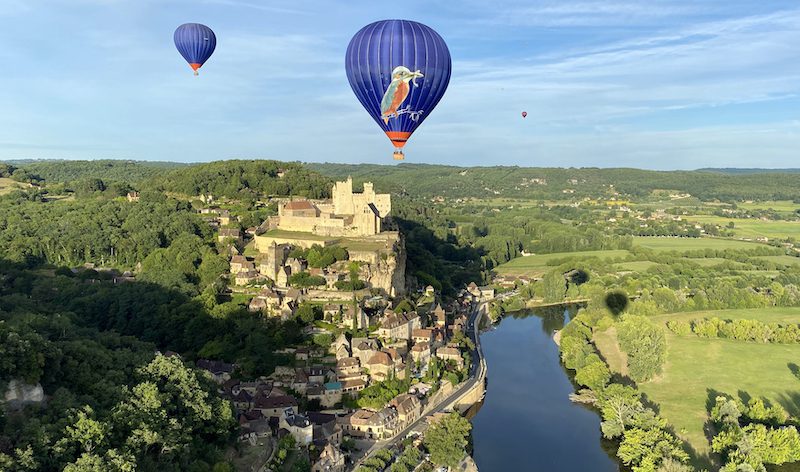Of all the creations humanity has sent up into the clouds, there is one that has remained unrivaled in beauty and fantasy, inspiring dreams in young and old onlookers alike: la montgolfière (“the hot-air balloon”).
SUBSCRIBE TO THE MAGAZINE
Read about the history of fantastical invention alongside beautiful photography of hot air balloons over France’s Dordogne region below.

The hot air balloon’s first passengers — a rooster, a sheep and a duck — made a regal first flight above the gardens of Versailles with a mystified King Louis the XVIth in attendance. Never before had such a wondrous sight been seen.
The hot air balloon was invented by Joseph-Michel and Jacques-Étienne, known to history as the Montgolfier brothers. They had been inspired by the works of a Portuguese Jesuit priest, Bartolomeu Lourenço de Gusmão, who a few years earlier had succeeded in levitating small balloons filled with hot air. The brothers took the idea one step further, creating an apparatus large enough to carry people.

In October 1783, a few months after the farm animals’ fantastic flight, the first manned flight took off from La Folie Titon, a historic manufacturing area in Paris that is now Monteuil street. This balloon was “captive,” meaning tethered to the ground by a very long rope. It reached over 5,100 square feet into the sky before being tugged down. The first “free” flight took place the following month and flew over five and a half miles before gently landing in the streets of the capital.
Strangely, it would be another year before a scientific explanation was offered for how these balloons worked, the basic principle being that hot air is less dense than cold air, which makes the balloon rise (the way air reacts to heat was naturally however hard to observe with 18th century technology!).

Today, hot air balloons are made of nylon and propelled by propane. But back then, they required great skill to fly, and many accidents (often fatal), hurt the invention’s popularity during its first centuries of existence. That changed in the 1950s, when the American inventor Ed Yost brought the finishing touches to decades of improvements, creating the flying wonder we know today.
Two main changes were made to the design over the years. The first was the envelope — which refers to the actual balloon. Originally sewn from paper and cloth, it was updated with nylon and polymers, making it light, air-tight and, now, fire resistant. The second improvement was the addition of the hydrogen burner, which releases a controlled flame that heats the air within the envelope. This replaced the previous technique, which was tossing burning hay up into the balloon (this was just as dangerous as it sounds!).

The history of the hot air balloons is a balance of fun and adventure, violence and grace, safety and extreme danger. Hot air balloons transport us both physically and in our imagination, true marvels to behold. If you’ve been witness to them in person… you’ll know the magic we’re speaking of.
All photography by © Perigord Dordogne Montgolfieres
Read Next: The Louvre Puts its Art Collection Online

